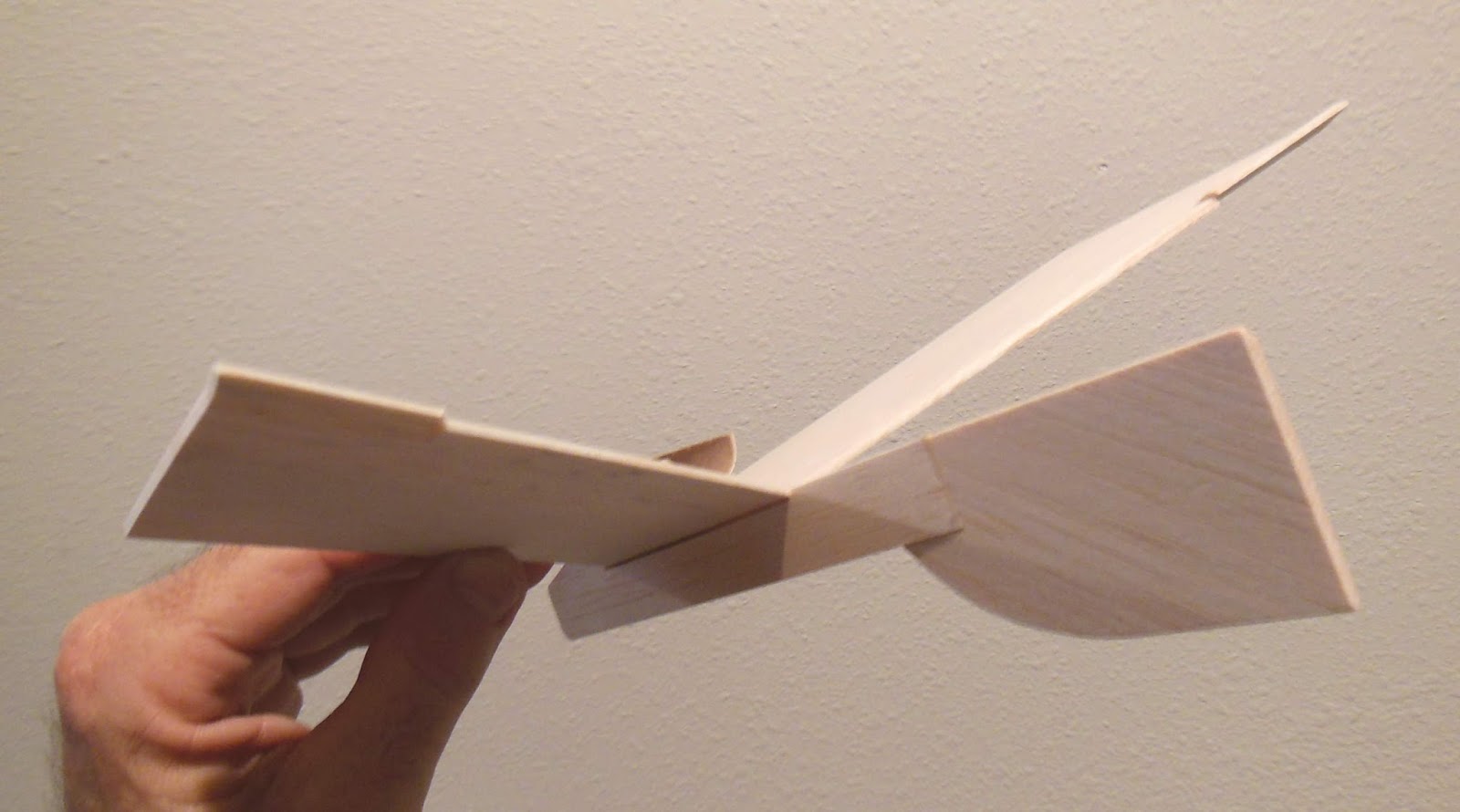- Joined
- Mar 5, 2017
- Messages
- 1,917
- Reaction score
- 806
Cool! (I'm a "show me" vs a "tell me" guy) so I understood immediately. Makes so much sense once it's drawn.

Something like a flap, or a leading edge slat, or even an aileron, changes the shape of the airfoil to generate more (or less) lift.
But on this small rocket glider, I don't have that option.
So, I am making small changes to the airfoil shape on the right wing to get the glide performance that I want. But I am now worried about my rocket performance.
NOTE: When I test a new model like the Sparrow, I go to an abandoned WW2 training airstrip here in northeast Arkansas. It looks like a wide dirt road surrounded by soybean fields.
I make sure that I do my rocket tests where no one can get hurt.
What did you use for the colors? Sharpies, RIT dye, something else?
That birdie is more of a GA Mosquito.

Oh no, after all that hard work! That's a problem with the tiny rockets. Can't tell you how many Mosquitos and Streaks I've lost over the decades, even with fluorescent paint on. But looks like the boost was straight. Are you going to rebuild?The good news is that, my Sparrow glides much better. The bad news is that it is gone.
Oh no, after all that hard work! That's a problem with the tiny rockets. Can't tell you how many Mosquitos and Streaks I've lost over the decades, even with fluorescent paint on. But looks like the boost was straight. Are you going to rebuild?
I think this model is similar: The angled wingtips help promote the desired performance at launch and glide.I do not see how this flying wing model is supposed to glide reliably, without some "up elevator" tabs along the trailing edge.
Note that the old Estes Nighthawk, the downturned winglets served both as rudders AND up-elevator tab (not angled down at 90 degrees like this model). Note that the joint line between the main wing and tips is angled, not parallel, causing the downturned tips to be at a different angle of attack to the air than the main wing (a few degrees down angle of attack compared to the main wing, acting as up elevator effect). That is the only flying wing without true elevators (or reflexed airfoil) that comes to mind, among reliable models, anyway.


Oh. Other photos looked to me more like the joint at the tips was parallel to the root, and the tips angled at 90 degrees. Sorry you lost it. What engine?
Enter your email address to join: